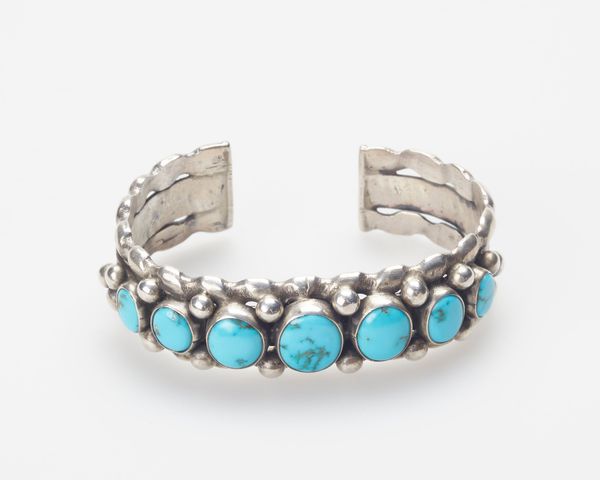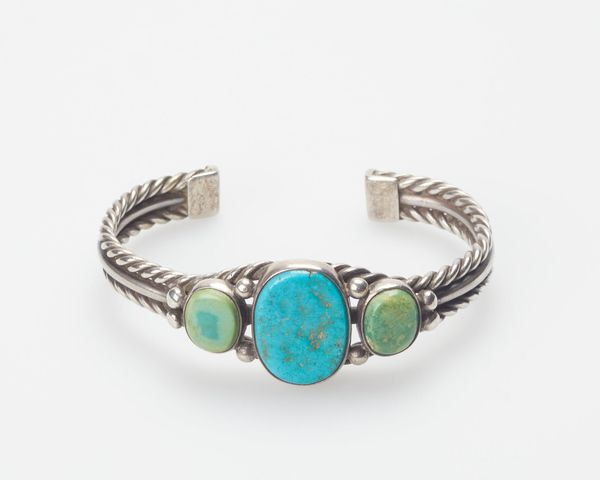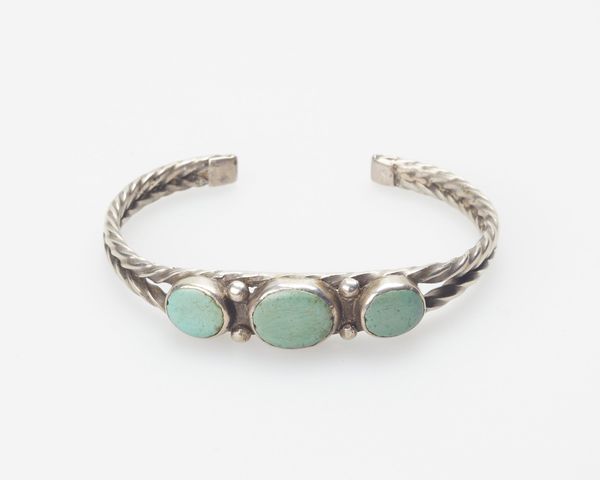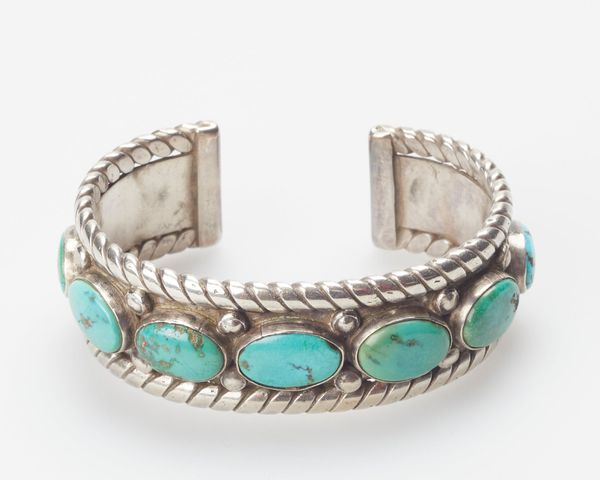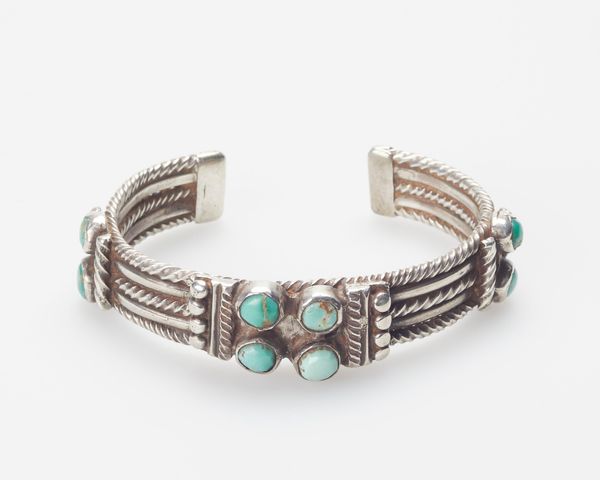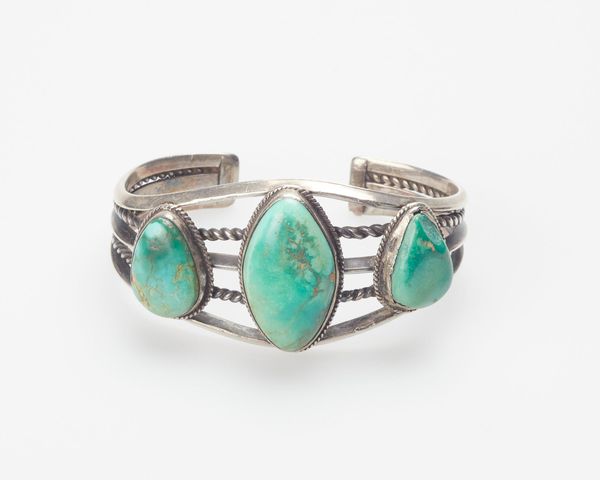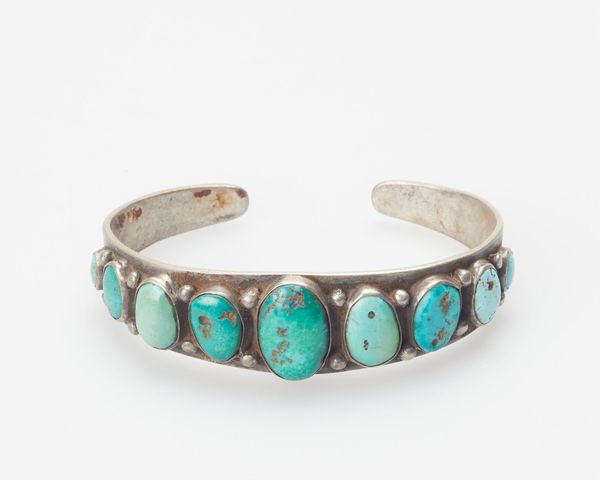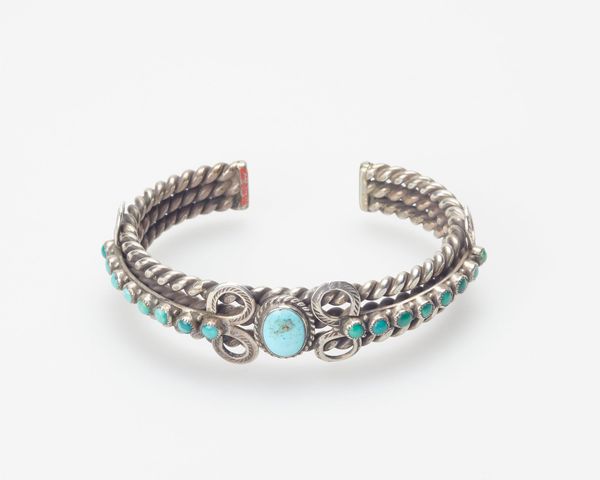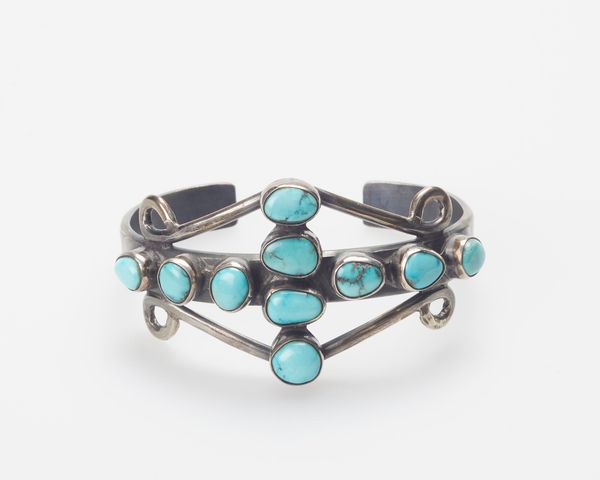
silver, metal
#
silver
#
metal
#
indigenous-americas
Dimensions: 2 3/4 x 1 5/16 in. (7.0 x 3.3 cm)
Copyright: Public Domain
Editor: Here we have a "Bracelet" created around 1930 by Navajo artists. It is crafted from silver and metal, and those three beautiful turquoise stones catch my eye. What strikes me most is the way the bright blue stones contrast with the twisted silver. How do you see this piece fitting into a larger historical narrative? Curator: This bracelet, like many Indigenous artworks of the period, embodies a complex negotiation between tradition, cultural resilience, and the impact of colonialism. It prompts us to consider the circumstances under which these objects were created. For instance, were the materials sourced through trade networks influenced by colonial economic systems? Editor: That's a good point! I hadn’t considered the origin of the silver itself. How might we interpret the turquoise, beyond its obvious aesthetic appeal? Curator: Turquoise holds deep spiritual significance for many Indigenous peoples, often associated with protection and healing. Its use here might represent a form of cultural continuity and resistance, asserting Indigenous identity within a changing world. Think of it as a wearable statement of sovereignty. Does knowing that change how you see it? Editor: Absolutely. It transforms it from a beautiful object into a powerful statement about cultural survival. I initially saw a piece of jewelry, now I'm seeing resistance and resilience embodied in metal and stone. Curator: Precisely! This highlights the crucial role art plays in understanding social justice movements. Examining this bracelet allows us to reflect on both past injustices and the ongoing struggle for Indigenous rights. Editor: I appreciate you helping me to delve deeper, recognizing that it's far more than just a bracelet. Curator: And I am glad we’ve shifted focus from its surface to engage in critical thought!
Comments
No comments
Be the first to comment and join the conversation on the ultimate creative platform.


